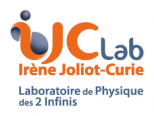The main research themes of the Theory Pole are nuclear physics, cosmology and gravitation, physics beyond the standard model, hadronic and strong interaction physics, flavor physics of quarks and leptons, mathematical physics as well as than statistical physics.
Nuclear physics themes cover different aspects of nuclear behavior, from the characteristics of isolated baryons to the collective behavior of nuclear matter.
The themes of hadronic physics and strong interaction cover chromodynamics in its perturbative and non-perturbative, linear and non-linear regimes, the multidimensional quark and gluon content of hadrons, as well as the production of bound states of heavy quarks .
The themes of quark and lepton flavor physics cover a wide range and energy. They are based on effective field theories (eg SMEFT) or QCD (in particular its non-perturbative aspects via QCD on lattices) and consist of the construction of new theoretical models predicting realistic physics scenarios beyond the standard model and in phenomenological studies at low and high energies.
The themes of physics beyond the standard model cover a wide variety of topics such as dark matter, neutrino oscillations, matter-antimatter asymmetry, the strong CP problem, the unification of couplings, …
The themes of statistical physics cover systems composed of a very large number of components (or “degrees of freedom”). They specifically study systems composed of charged particles with or without delay, non-equilibrium physical systems, reaction-diffusion processes, granular systems, random geometry, complex networks and different traffic phenomena (road, pedestrian, intracellular).
The themes of mathematical physics cover on the one hand algebraic and geometric methods in various fields ranging from noncommutative geometry to quantum field theory, on the other hand classical analysis and functional analysis in quantum mechanics and field theory.
Cosmology and gravitation topics cover gravitation in the presence of extra dimensions, as well as initial conditions in the early universe and their effect on galactic structures.
Much of our research is conducted in relation to current and future experimental programs.





